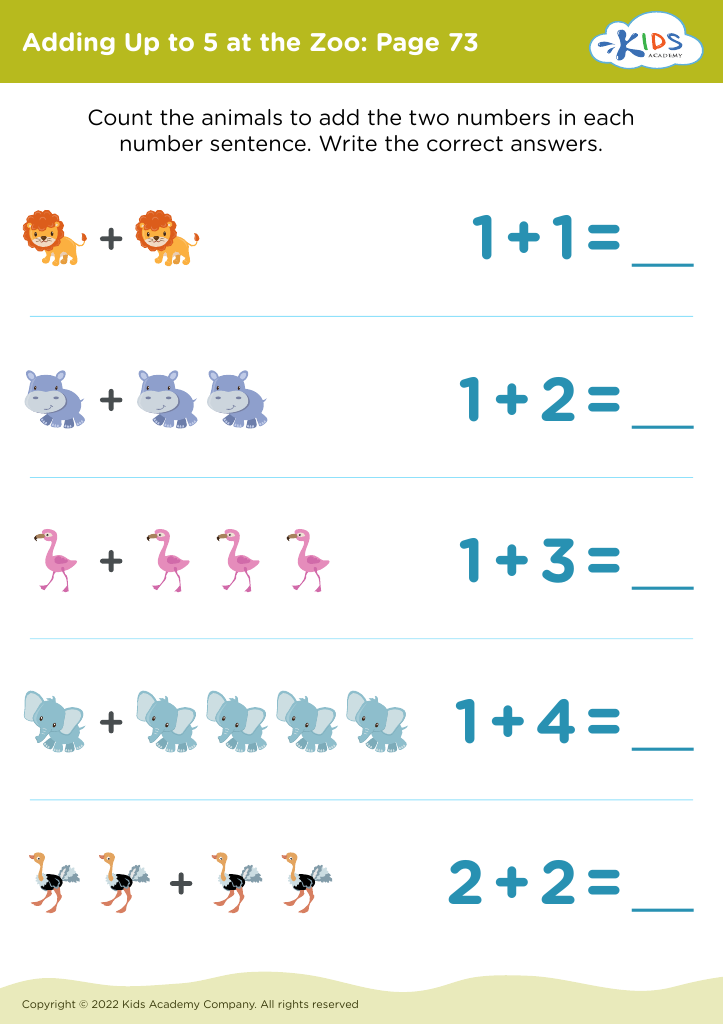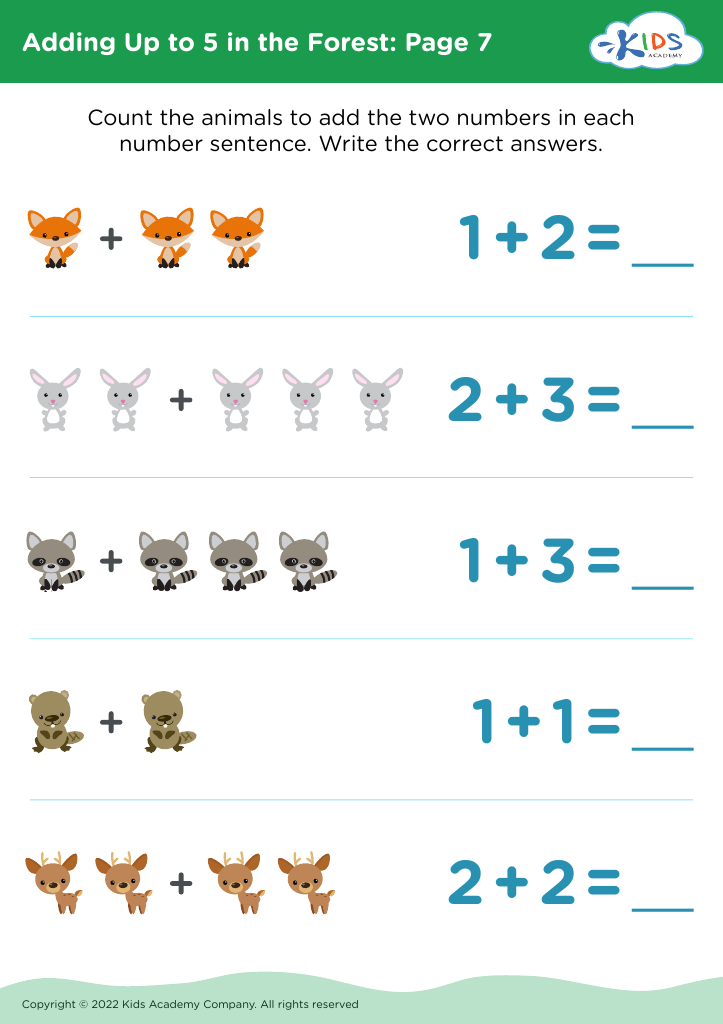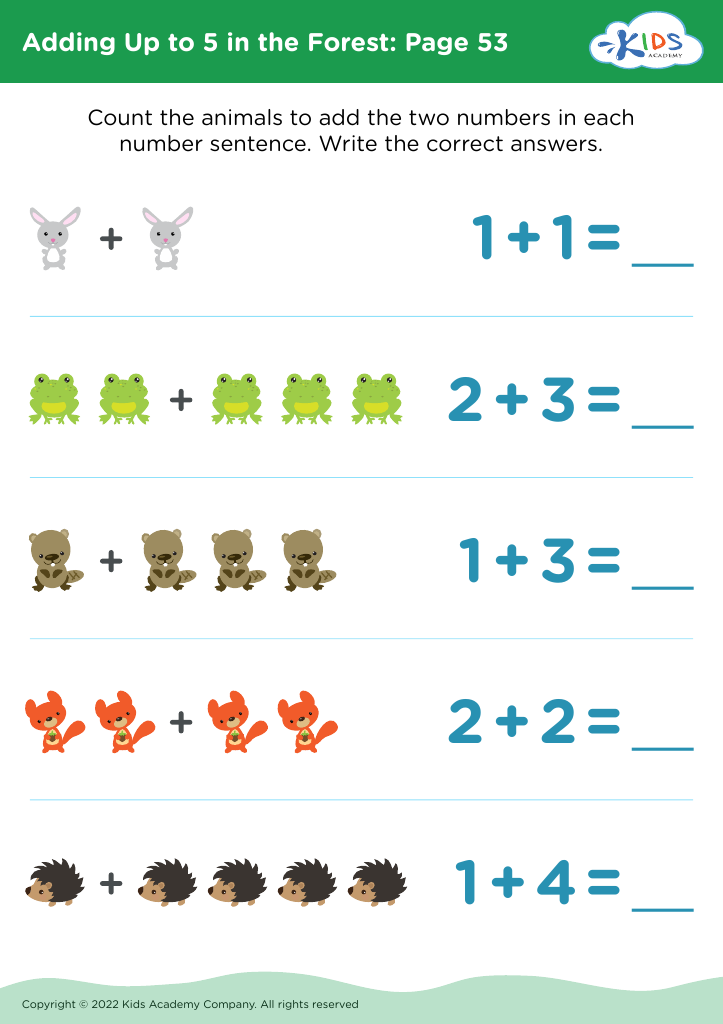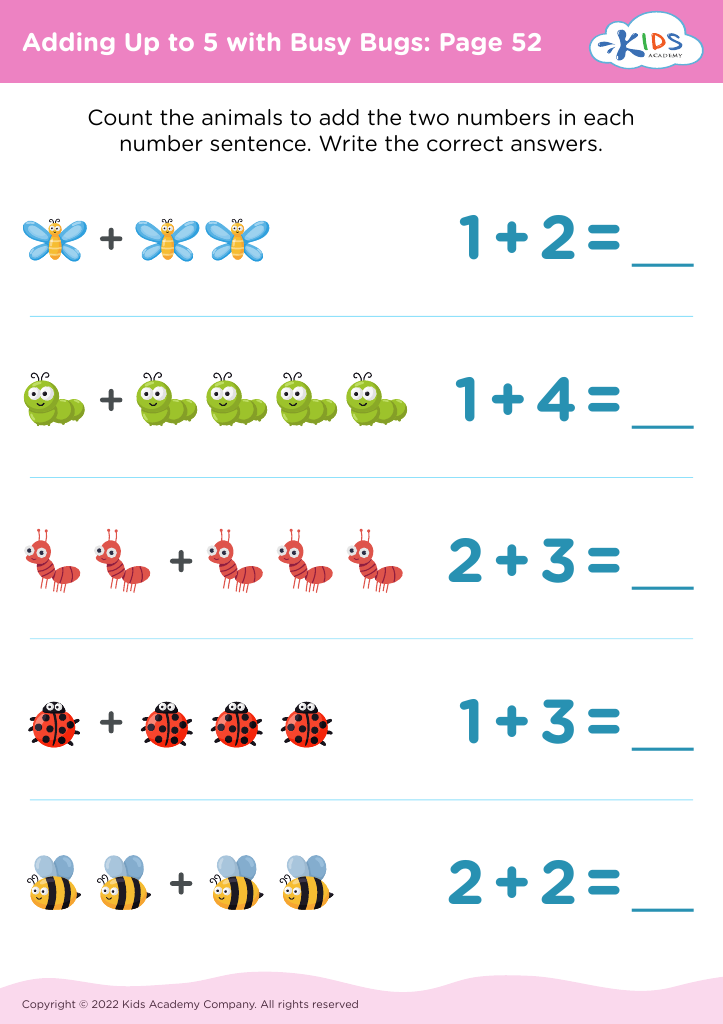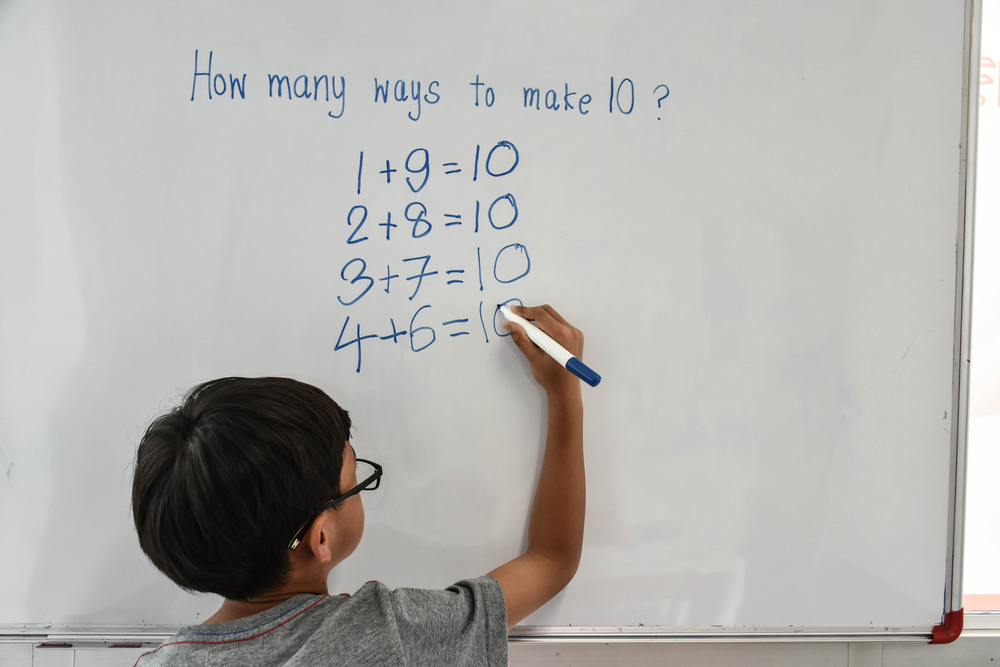Visual comprehension Addition Worksheets for Ages 5-7
7 filtered results
-
From - To
Enhance your child's math skills with our engaging Visual Comprehension Addition Worksheets designed for ages 5-7. These worksheets promote visual learning and help young learners grasp the concept of addition through colorful illustrations and interactive exercises. By using visual aids such as counting objects and number lines, children can improve their understanding of numbers and basic math operations. Our carefully crafted activities make learning fun and are suitable for home or classroom use. Explore our resources to support your child's educational journey and foster a love for mathematics while building confidence in their abilities! Perfect for curious minds eager to learn!
Visual comprehension in addition is a crucial skill for children aged 5-7, laying the foundation for their mathematical understanding. At this developmental stage, children are naturally inclined to learn through visual stimuli; thus, presenting addition concepts visually helps to solidify their understanding and fosters a positive attitude toward math.
When parents and teachers focus on visual comprehension, they help children grasp the meaning behind numbers and operations rather than just rote memorization of facts. Tools such as number lines, counters, and visual aids like ten-frames provide children with tangible means to see how quantities interact, building their confidence in problem-solving. In addition, visual comprehension promotes critical thinking as children learn to analyze and interpret visual data, enhancing their overall cognitive skills.
Furthermore, early mastery of visual addition contributes to future academic success, making it essential for parents and teachers to prioritize this area. It supports the development of resilience and perseverance in children, encouraging them to approach complex problems with curiosity rather than fear. Ultimately, nurturing visual comprehension in addition equips children with a stronger mathematical foundation, setting them on a path for lifelong learning and effective numeracy skills.
